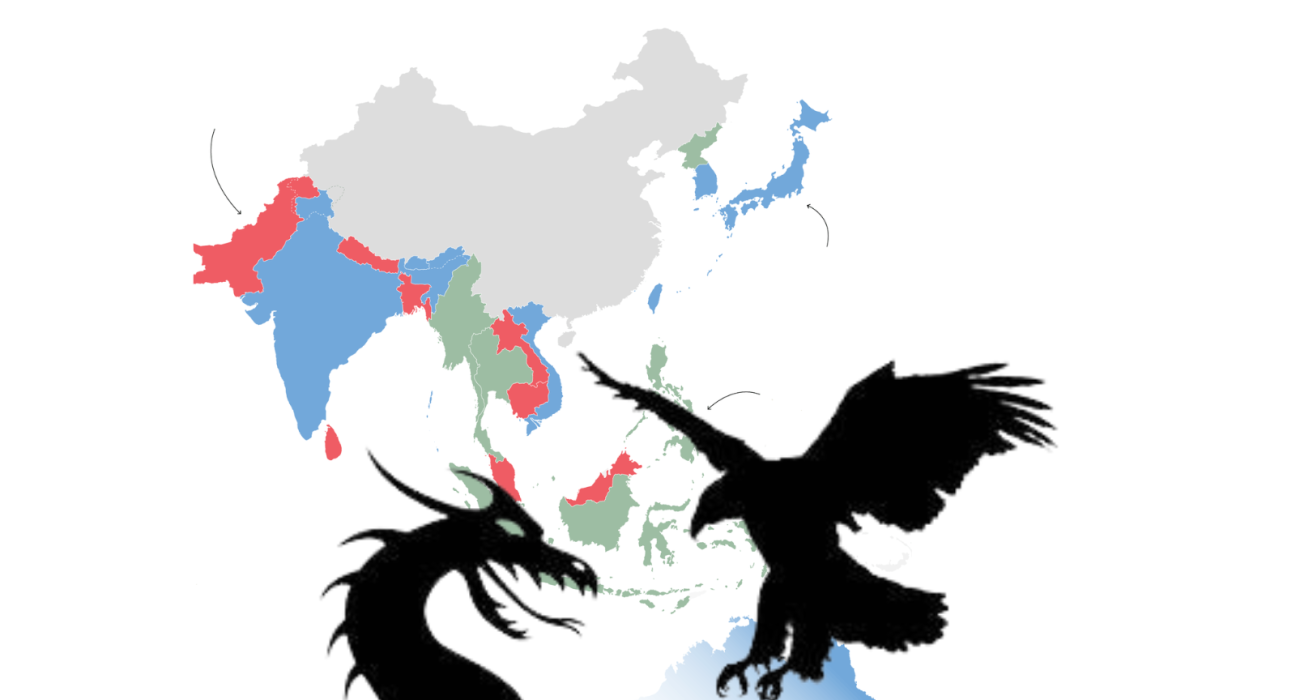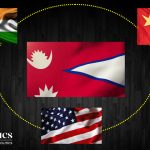While reading the statements made and the concerns discussed during the recent Shangri La dialogue 2025, one can clearly interpret what Asian Nations truly need and what they are weary of. The Dialogue exposes the evolving fatigue among the Asian nations regarding their forever-balancing act on great power rivalry between the US and China. Moreover, the rising concerns about the threat to these nation’s sovereignty is well expressed along with the concerns on the raising protectionism. This article while addressing these concerns and sentiments of the Asian powers, it introduces another power, Europe, that shows its growing interest and thereby active engagement in the Indo-Pacific region.
A short background on the Shangri-La Dialogue
The establishment of the Shangri-La Dialogue, which is the highest-level multilateral defence and security dialogue mechanism in the Asia-Pacific region, was established with the intent to promote multilateral security in the region. The crux of the Shangri-La Dialogue has been inspired during the 36th Munich security conference where the Asian officials reinforced the idea that Asia needed its own defence minister-level defence dialogue.
During its preliminary stage of inception in 2003, its members suggested including defence officials such as chiefs of staff, service commanders and permanent secretaries of defence ministries of some countries. In 2004, the Shangri-La Dialogue established an Asia office in Singapore. It has been over 20 years now that the Shangri-La Dialogue has been playing a quintessential role in shaping the regional security architecture apart from the Association of Southeast Asian Nations (ASEAN) Regional Forum.
Currently, the Shangri-La Dialogue includes 47 countries, including 40 ministerial-level delegates, defence ministries, military chiefs, and senior officials, attended the summit.
Shangri-La Dialogue 2025
The Shangri-La Dialogue which took place from 30th May to 01st June 2025 were participated by Singapore, Malaysia, the U.S., Australia, France, Japan, China, India, the Philippines, Germany, Cambodia, Pakistan, Vietnam, New Zealand, the UK and the European Union (EU).
Given such a wide participation of countries with varying interests, the platform of Shangri-La dialogue has been used by these countries not only to convey their conception of security in the current multipolar world order but also whom they identify as threat and their preferred way of conflict resolution. This platform has created opportunities for the participant countries to exchange and dialogue, thereby enhancing trust, more substantive and effective cooperation. Another key highlight which can be pointed out is that countries which participated belong to different power statures and is not solely dictated by the great-powers and its allies. Hence, inclusivity is one of the features of the Shangri-La Dialogue.
The keynote address was given by the France President Emmanuel Macron. In his address, he called for allying with Europe and Asia.
Few of the ASEAN countries which had participated, there are few common concerns which can be identified.
US-China Power Rivalry Addressed
Firstly, the burgeoning rivalry and competition between the U.S. and China has serious repercussion for this region. These countries do not want to explicitly choose either of the great powers as doing so which cost their strategic autonomy. For instance, one of the implications of the tech war between the U.S. and China over semiconductor and its related technology, this resulted in “China Plus One” strategy in which most of semiconductor producing companies shifted their bases in countries of Southeast Asia and East Asia as well.
This led to the integration of this countries into the global value chain of semiconductor. Malaysia has a global market share of 13% in semiconductor packaging and testing. Whereas, Taiwan’s United Microelectronics and Global Foundries have invested US$5 and US$4 billion respectively in Singapore so as to expand their facilities in the same. Hence the adoption of protectionist policies adopted by the U.S. and the ongoing tariff war which is used as a mechanism to address trade deficit has not only been a major blow to the markets also, if it is continued it could pose a serious challenges to the smooth functioning of the global value chain.
Moreover countries like Cambodia had expressed concerns not only over the great-power competition but also over its naval base Ream Naval Base. Cambodia not keen at allowing to station foreign troops in its naval base but is keen on building stronger defence and security links with other countries and through multilateral activities.
On the other hand, Vietnam and Philippines have both emphasised on the rising tensions in the South China Sea. The aggressive behaviour of China in the maritime area have acted as a bone of contention which has threatened- sovereignty, maritime security and freedom of navigation. Vietnam’s Defence Minister Phan Van Giang stated that Vietnam abides by the independence and self-reliance and also the “Four No’s” in its defence policy.
US’s conditional security guarantee
Among the two great-powers i.e., the U.S. and China, the U.S. Secretary of Defence Pete Hegseth had emphasised on its commitment to the Indo-Pacific region. However, Pete has certainly delivered a message over defence sharing in a more calibrated manner. The messaging has come at a time when the world is witnessing war and the withdrawal of the US of its USAID and its ongoing tariff war. It also implicitly means that the U.S. security guarantee to its Asian allies is now conditioned which will be based on how these countries are proactively balancing internally. This series of events especially the later has definitely affected its global reputation of being a trusted partner. Nevertheless, Pete went on further to highlight “China as threat” and warned against the devastating consequences of China taking Taiwan in the Indo-Pacific region.
China’s Response
To Hegseth’s views China responded by stating that the U.S. is a hegemonic power in the Asia-Pacific region responsible for disrupting peace. China has condemned the U.S. for using the Shangri-La Dialogue to “create disputes, sow discord, provoke confrontation and seek self-interests”. Beijing reiterated that its claims on Taiwan and criticized the efforts of the U.S. to contain China in the region. Nevertheless, the Shangri-La Dialogue has been the one of the only forums in which China’s Defence Leadership speaks publicly about their country’s foreign policy. This year, Beijing did not dispatch its defence minister, but rather a senior official from the People’s Liberation Army’s National Defence University.
Japan’s Emphasis
Despite of the opposing views of the great powers, Japan’s Defence Minister Gen Nakatani called for closer defence cooperation between the partners of the Indo-Pacific region in order to strengthen the rules-based order. He also emphasised over the need for close defence cooperation as the world continues to witness the ongoing Ukraine-Russia war and China’s unilateral attempts to change the legal status of the features and water of the South China Sea and East China Sea. Furthermore, Gen Nakatani during his speech has unveiled Japan’s new OCEAN (One Cooperative Effort Among Nations) which is aims to facilitate working with like-minded nations by “taking a comprehensive view of the Indo-Pacific as a whole”.
India’s Autonomy
India, on the other hand who was represented by Defence Chief Anil Chauhan highlighted the transformation of modern warfare and India’s focus on technological advancements and narrative control in modern warfare. Another important aspect of his speech was that he emphasised over India’s strategic autonomy (in the face of ongoing rivalry between the U.S. and China) and its continuing adherence to rules-based order and freedom of navigation in the Indo-Pacific.
Europe’s growing love for Indo Pacific
Furthermore, this 22nd Shangri-La Dialogue witnessed the remarkable presence of the countries of EU. There were five Defence Ministers from the EU who attended this meeting. It shows a remarkable shift in outlook towards the Indo-Pacific as the EU sees huge opportunities of investments in this region. Already the region of EU has been the heat from the ongoing Ukraine-Russia War and also the instability in West Asia. In addition, things have changed ever the Trump administration 2.0 have started the tariff war.
Given the context, the EU is looking forward to this region not only for enabling free trade agreement but also cooperate in areas like climate change. In addition, the European Union Strategy of Indo-Pacific has been adopted in 2021 and their willingness to engage with this region has come at a time when the liberal-institutional order has lost its sheen and the swelling rivalry between the U.S. and China has already made choices tough for other countries.
Given an overall gist of the 22nd Shangri-La Dialogue, all the participant countries have used this platform to express their views on strategies and cooperation.




